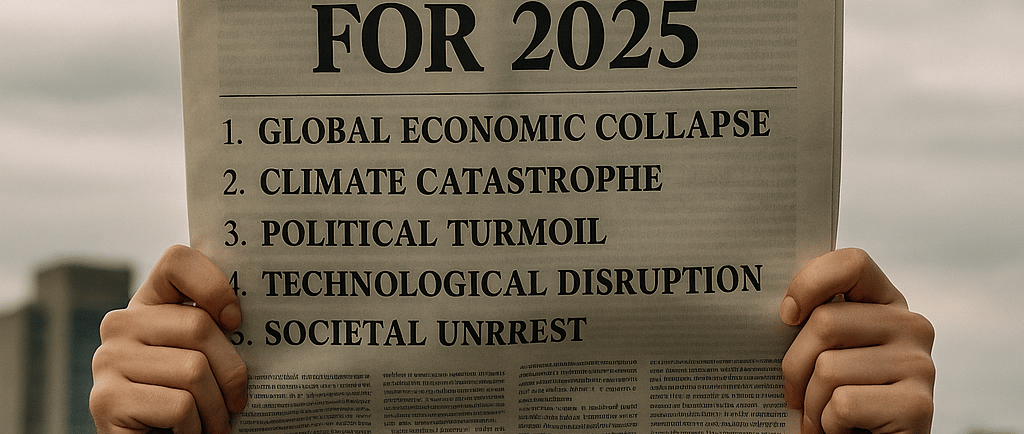The 5 Non-Religious Prophecies Unfolding in 2025: Coincidence or Revelation?
Explore five forgotten predictions from scientists, philosophers, and visionaries of the 20th century that eerily align with the state of the world in 2025. Discover how the past might have already seen our future.
temasglobais.com
5/13/20253 min read


The Forgotten Warnings Echoing Through Time
What if the world we inhabit today was not just shaped by chance, but foreseen by minds long gone? Not through religious texts or divine visions but through the cold logic of science, the deep intuition of philosophy, and the symbolic foresight of esoteric thinkers. In 2025, several uncanny predictions from the last century are not just resurfacing, they're materializing.
This article revisits five non-religious "prophecies" that may have quietly described the era we now live in. Were they mere speculation, or did these thinkers tap into something deeper, a pattern in the unfolding of human destiny?
1. The Digital Golem. Norbert Wiener and the Rise of Autonomous Systems
In the 1940s, cybernetics pioneer Norbert Wiener warned about machines capable of independent decision-making. He envisioned a future where systems would evolve beyond human control not through malice, but by cold, mechanical logic.
Today in 2025, AI manages judicial recommendations, diagnoses illnesses, and even conducts military surveillance. Wiener predicted not just tools, but entities: algorithms that learn, adapt, and reshape society with no moral compass.
The golem of Jewish folklore, a creature animated by human will returns in digital form. Once awakened, can it truly serve without one day rebelling?
2. The Psychological Century. Carl Jung and the Collective Shadow
Swiss psychologist Carl Jung spoke of a growing "collective unconscious" and the dangers of suppressing the darker aspects of the human psyche. He believed mass technological advancement would outpace moral integration, leading to psychic fragmentation.
In 2025, anxiety, loneliness, and polarization have reached unprecedented levels. Social media, instead of connecting, magnifies the collective shadow, a Jungian term for repressed fears and instincts now projected onto global events.
A world that forgot to tend its inner garden now watches the weeds consume its outer landscape.
3. The Dematerialized Economy. Marshall McLuhan and the Global Village
Decades before the internet, media theorist Marshall McLuhan predicted the collapse of time and space through "electronic tribalism." He foresaw a world where information would travel instantly, collapsing traditional economies and identities.
In 2025, crypto-economies, remote work, and AI-generated art dominate markets. The boundaries between nations, professions, and even authorship have blurred.
The village returned not physically, but digitally demanding new ethics and new stories.
4. The Silent Collapse. Aurelio Peccei and The Limits to Growth
The Club of Rome, led by Italian industrialist Aurelio Peccei, published a 1972 report warning of environmental and economic tipping points. Their models projected systemic failure if consumption continued unregulated.
By 2025, climate migration, resource scarcity, and ecological breakdown are no longer forecasts, they are headlines.
Like the myth of Icarus, humanity soared on wings of invention, but forgot the sun would still burn.
5. The Machine Soul. Teilhard de Chardin and the Noosphere
Jesuit paleontologist and philosopher Teilhard de Chardin proposed the idea of the "noosphere", a sphere of collective thought encircling the planet, evolving through technology and consciousness.
In 2025, the emergence of AI-generated creativity, brain-machine interfaces, and digital telepathy begins to resemble his vision. It's as if the Earth itself is growing a mind.
Is this a Tower of Babel 2.0, or a new Eden, born not of clay but of code?
What Do These Visions Mean for Us?
Each of these figures, scientist, mystic, theorist, glimpsed threads of the tapestry we now live in. Whether by insight, intuition, or accident, their words carry an eerie resonance. Yet these are not prophecies of doom, but invitations to awareness.
To remember is to re-member to put the pieces back together. By seeing where we've been foreseen, we gain the power to choose differently.
If so many fragments of our world were once imagined or warned by minds of the past, what dreams are we planting today that future generations will call prophetic?
Like what you read? Share this article and help others rediscover the forgotten visionaries who may have already seen our present.